Video Production: Qiang Yufei, Cheng Aobing
On July 18, a team of 22 international students from Tianjin University of Technology visited the Lutai Spring Creative Cultural Industry Park in Ninghe District, Tianjin, embarking on an immersive journey into traditional Chinese culture.
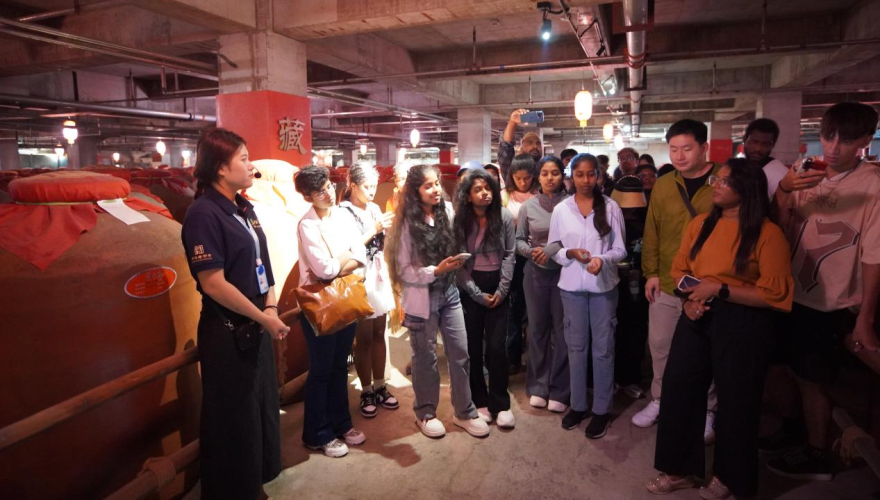
The international experience officer team visits the liquor cellar
Photo by Qiang Yufei
Their first stop was the historic Lutai Spring brewing workshop, where a guide introduced the origins, evolution, and transmission of Chinese baijiu-brewing techniques. At the Lutai Spring Local Culture Museum, they further explored the history of Tianjin's urban development, Ninghe's local traditions, intangible cultural heritage, Chinese liquor culture, and the region's baijiu history. As the students pushed open the heavy cellar door and descended the steps into the time-honored space known as the "First Cellar of China," they felt as if they had traveled back to ancient times. The vast underground cellar, home to thousands of aging liquor jars, left them in awe of China’s centuries-old brewing craftsmanship and cultural legacy.
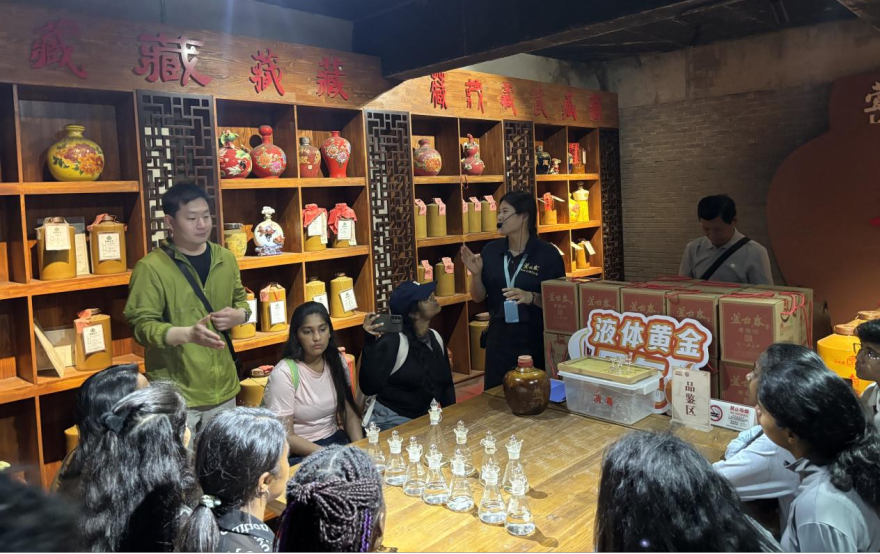
Staff introduce Chinese liquor-brewing techniques to international youth
Photo by Liu Ying
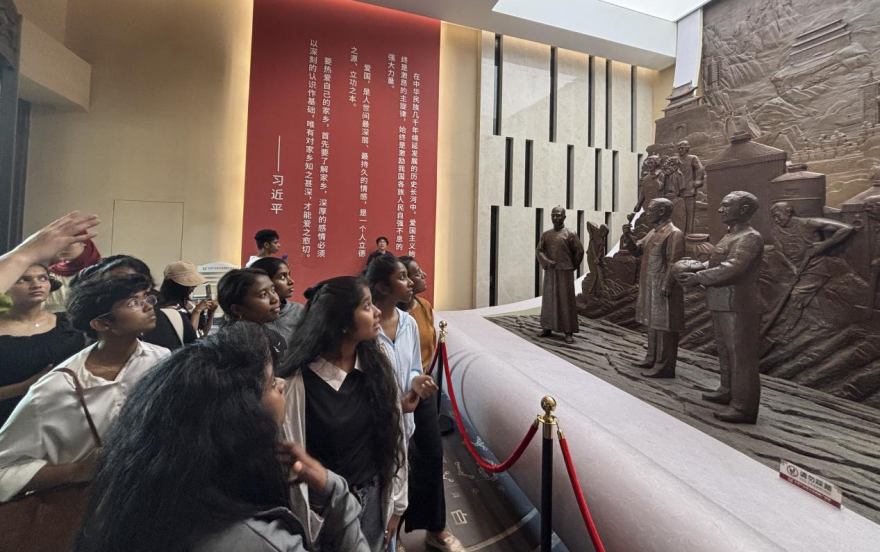
International youth visit the liquor culture museum
Photo by Liu Ying
In the liquor culture classroom, staff introduced the significance of baijiu in Chinese culture and the characteristics of sauce-aroma baijiu. Traditionally, Chinese liquor serves three major roles: as a ritual offering, a social bridge, and an artistic medium. These cultural elements remain integral in modern banquets and business settings. Meanwhile, the rise of craft breweries and low-alcohol fruit wines reflects evolving tastes among younger consumers, showcasing how traditional liquor culture continues to innovate. The establishment of liquor culture museums and intangible heritage workshops across China breathes new life into ancient brewing wisdom, integrating it into contemporary society and safeguarding this treasured cultural heritage.
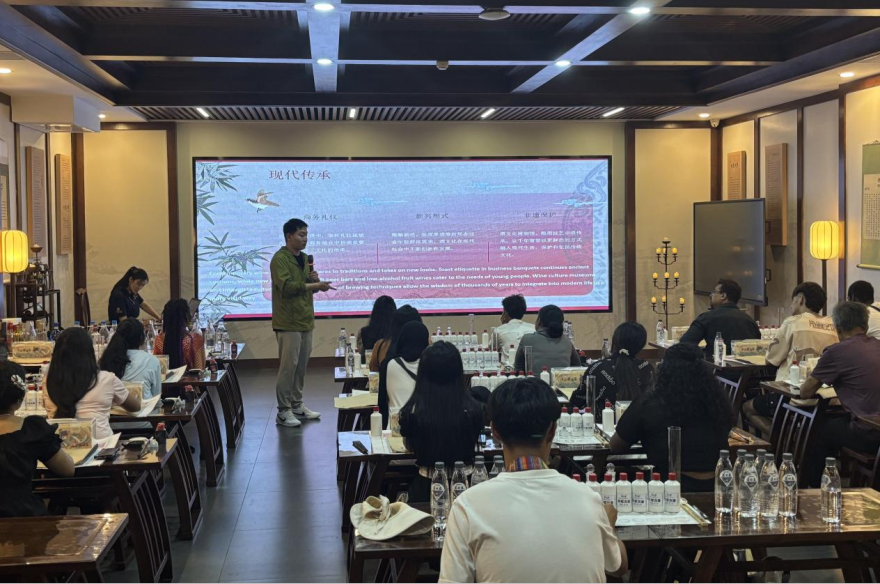
A teacher explains the characteristics of Chinese liquor culture and sauce-aroma liquor craftsmanship
Photo by Liu Ying
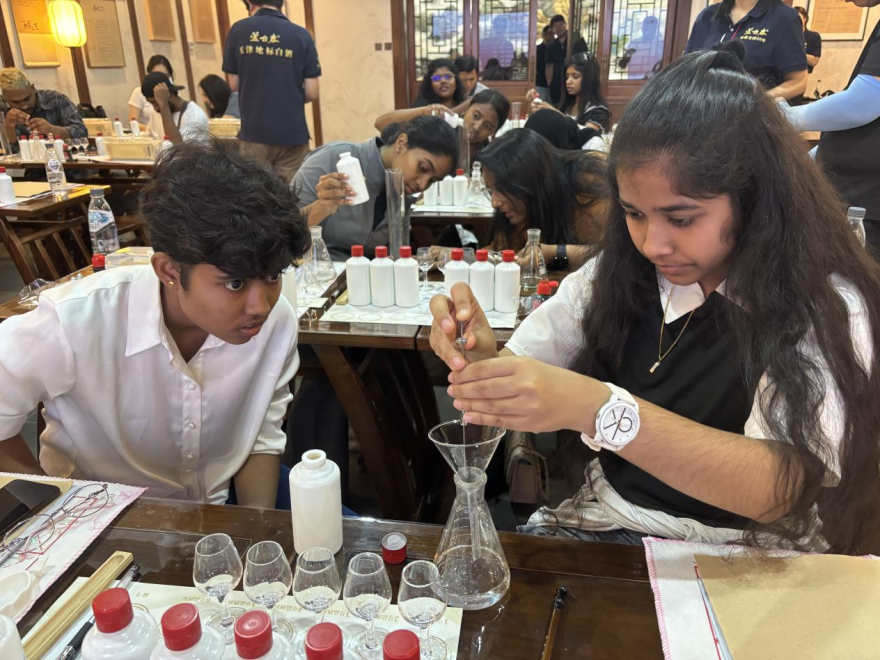
International youth try mixing liquor
Photo by Liu Ying
The students listened attentively, eager to taste the unique flavors of Chinese baijiu. During the interactive session, a bartender guided each student in creating their personalized baijiu, allowing them to feel the unique charm of Chinese liquor culture firsthand. Each student became a brewer, crafting their own bottle of baijiu and labeling it with their name as a keepsake. Li Landi, a student from Burkina Faso, said, "After learning about Chinese liquor culture, I gained so much knowledge. This is the liquor I mixed myself. The staff showed us how to mix it, and after tasting it, I really like the flavor. I want to bring this bottle home to share with my friends."
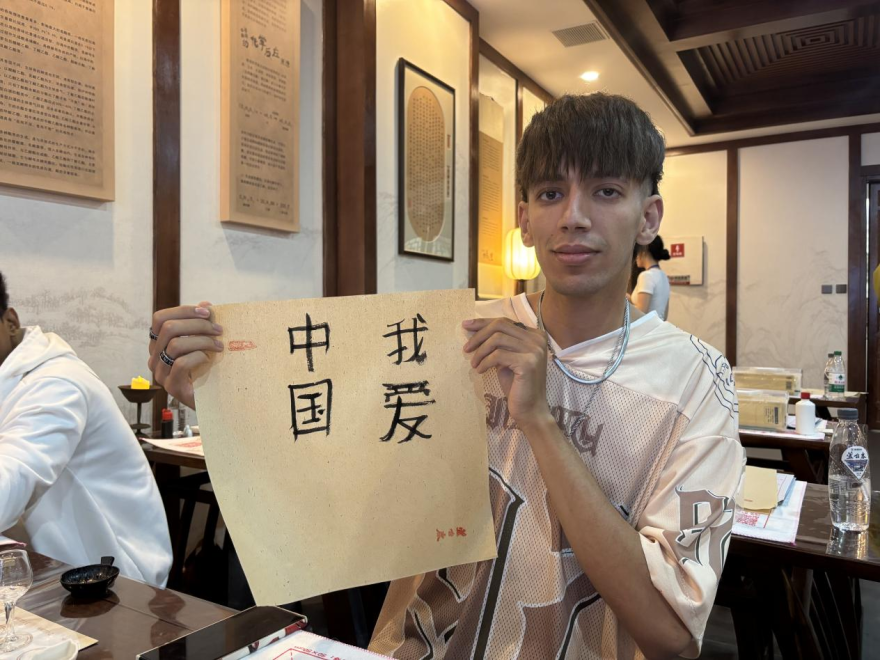
Xiao Jiang from Morocco showcases his calligraphy
Photo by Liu Ying
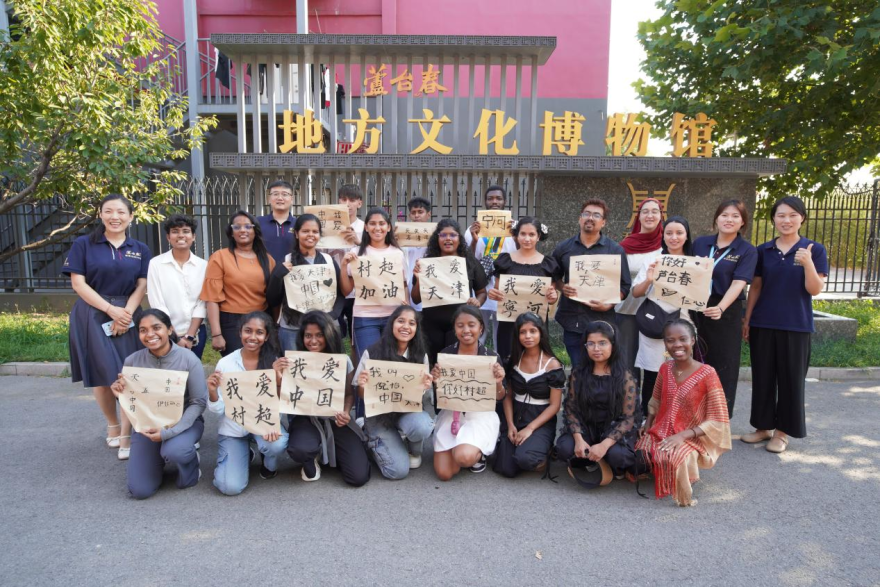
The international experience officer team poses for a photo with the Lutai Spring staff
Photo by Qiang Yufei
Later, under the guidance of a calligraphy teacher, the students practiced writing Chinese characters with brushes. They wrote phrases such as "I love China," "I love Tianjin," "I love Ninghe," and "Go, Village Super!"—experiencing the elegance and expressive power of traditional Chinese calligraphy through every brushstroke. Reluctant to leave, the international experience officer team concluded their cultural journey in Ninghe. Many expressed their intent to share the landscapes, knowledge, and culture experienced during the visit with friends and family back home, helping more people learn about the rich history and cultural identity of Tianjin, especially Ninghe. They also hoped to invite their loved ones to one day experience the unique charm of Jin-style culture and the heritage of Lutai Spring baijiu culture for themselves.
Text: Liu Yifei
Copyright ©1997- by CRI Online All rights reserved